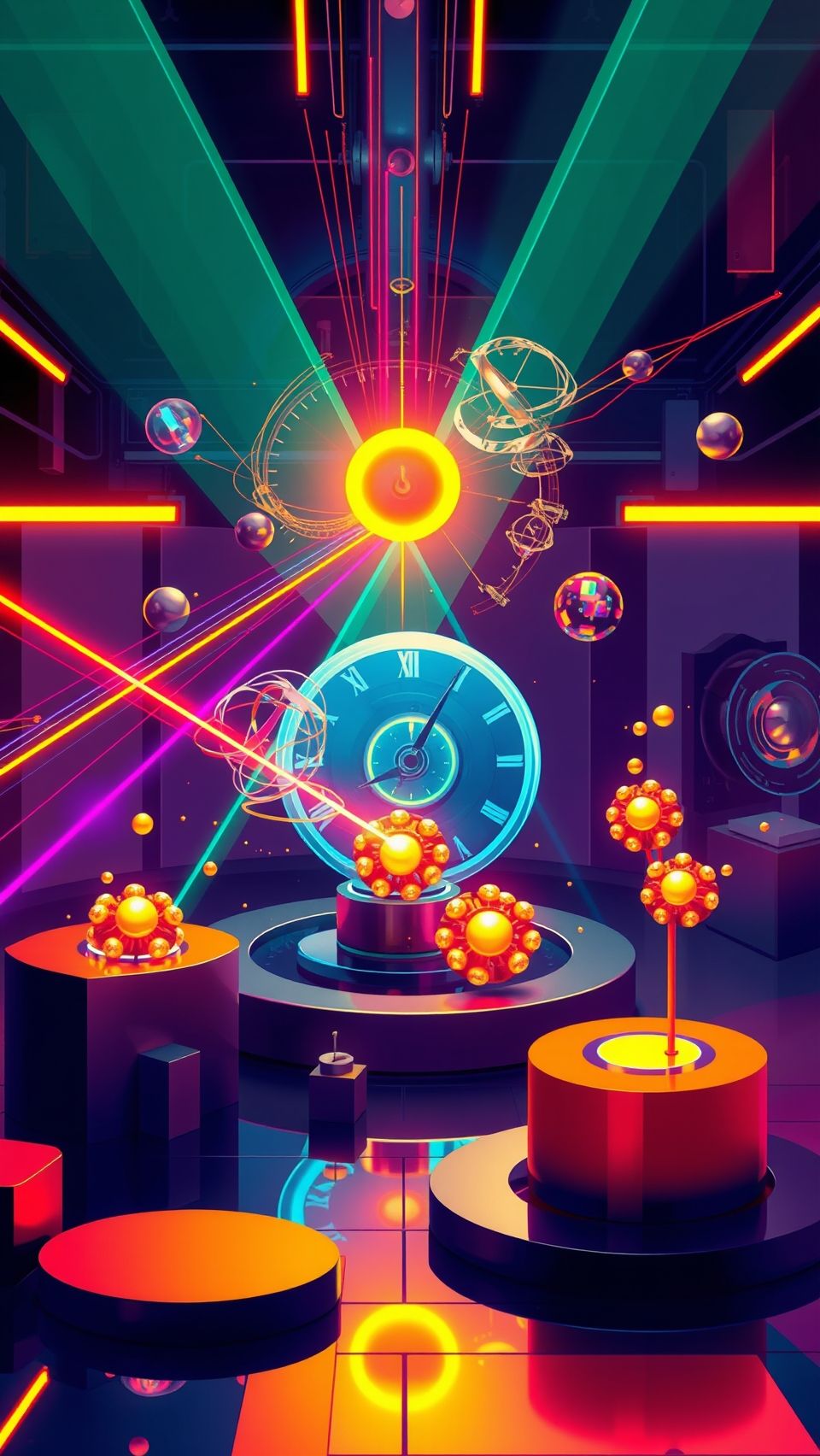02. April 2025
Scientists Unleash Revolutionary Clock Tech To Reimagine Time Itself

A team of international physicists is on a mission to redefine the second, a fundamental unit of time with far-reaching implications for nearly every aspect of scientific measurement. This endeavor has been made possible by the world’s most accurate clocks – specifically, optical clocks.
The definition of the second has become outdated in light of unprecedented advances in technology. A more precise definition is crucial to all sorts of physical measurements, from the speed of light to the masses of atoms and molecules. However, achieving this goal requires instruments that are as delicate as they are extraordinary. Optical clocks rely on the precise control of laser beams to manipulate the vibrations of tiny crystals or atoms.
These devices are so sensitive that a single stray photon can disrupt their accuracy. To get there, scientists have had to take an unconventional approach. In 2022, a global consensus was reached among physicists that it was time to reexamine the definition of the second in light of these remarkable advancements.
But this meant gathering together some of the world’s most sophisticated clocks for comparison purposes. The result was a perilous journey – literally. At the German national metrology institute, experts carefully loaded an optical clock into a specially designed trailer containing 40,000 strontium atoms cooled to absolute zero (−273.15°C). This delicate edifice relied on the precise control of laser beams and mirrors to bounce a thin beam of light onto its atomic crystal lattice.
If not handled with care, this intricate instrument could be compromised by even the slightest disturbance. The trailer was then attached to a motorway, where it was subjected to the stresses of high-speed travel. A single jolt could have easily disrupted the clock’s timing, rendering it inaccurate for weeks or even months.
Despite these risks, the team pushed forward with their mission. Optical clocks are not designed for mobility; they require a stable environment to function properly. This was why the journey to reassemble the clocks in different locations around the world became an epic quest. Each stopover required meticulous setup and calibration, as well as careful monitoring of the clock’s performance to ensure accuracy.
The global collaboration involved research institutions from various countries, each contributing their own cutting-edge optical clocks for comparison purposes. Some of these clocks were deployed at remote locations with extreme environments, making it a formidable challenge to maintain their precision.
For example, one team set up an optical clock in the Atacama Desert, Chile – an environment known for its arid conditions and unique astronomical properties. The desert’s dry air and stable temperature allowed researchers to minimize external interference while taking precise measurements of time.
Another site was located on a remote island off the coast of Japan, where scientists carefully integrated their optical clock into the island’s natural landscape. Here, the delicate balance between the clocks’ timing and environmental conditions required constant monitoring to ensure accurate results.
The stakes were high, but the potential rewards were substantial. By redefining the second based on modern optical clocks, physicists could redefine many fundamental constants in physics – such as Planck’s constant and the speed of light. These parameters underpin much of our understanding of the universe, from particle physics to cosmology.
One such parameter is the fine-structure constant, which governs the behavior of electrons in atoms. This value has been measured with varying degrees of accuracy over the years, but its redefinition would provide a far more precise and consistent basis for future measurements.
Furthermore, the improved definition of the second would have profound implications for various fields, including medicine, finance, and engineering. The increased precision would enable scientists to make more accurate predictions about phenomena such as atomic decay rates, chemical reactions, and even climate modeling.
The quest to redefine the second has been years in the making, but it’s finally within reach. As the world’s best optical clocks continue their journeys across the globe, physicists are poised on the cusp of a major breakthrough that will revolutionize our understanding of time itself.